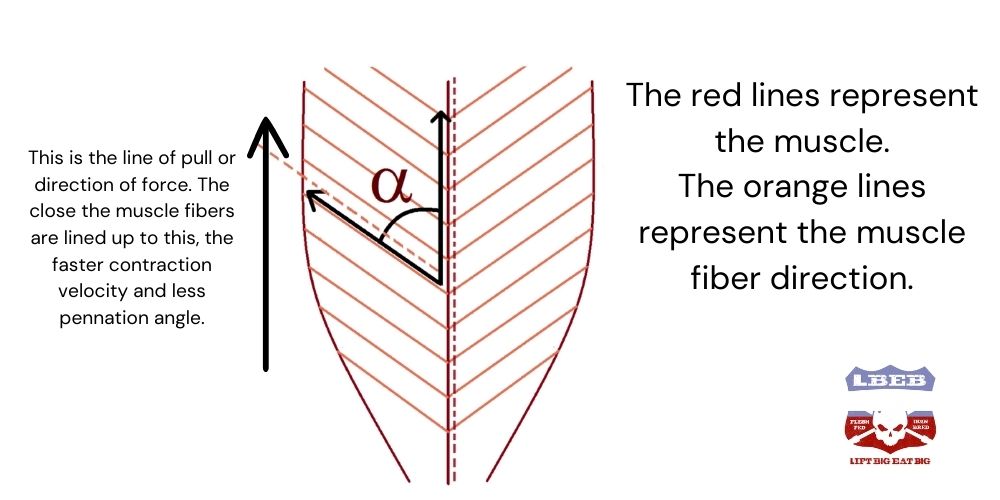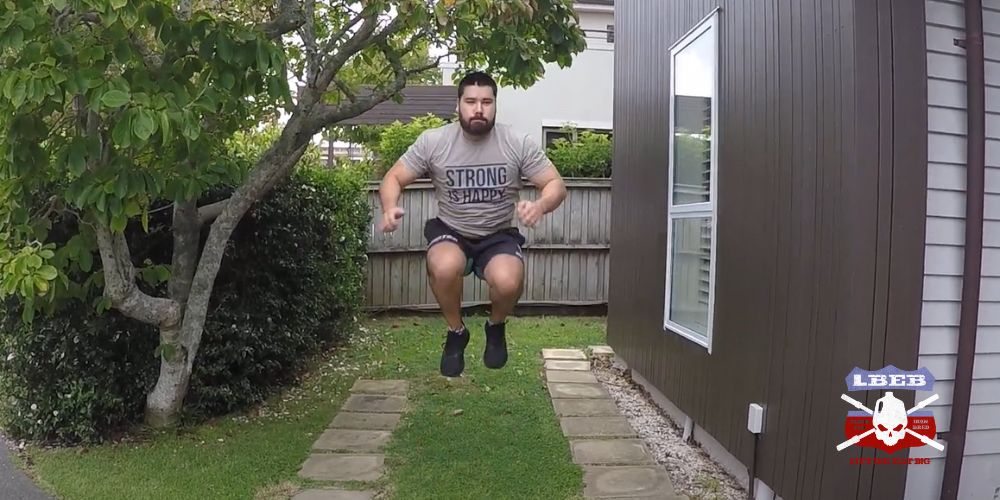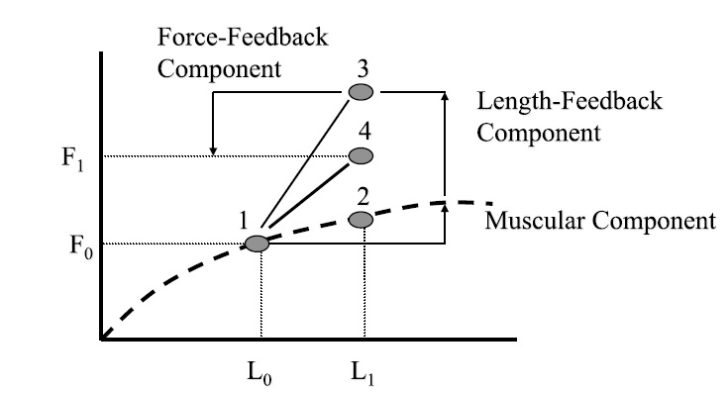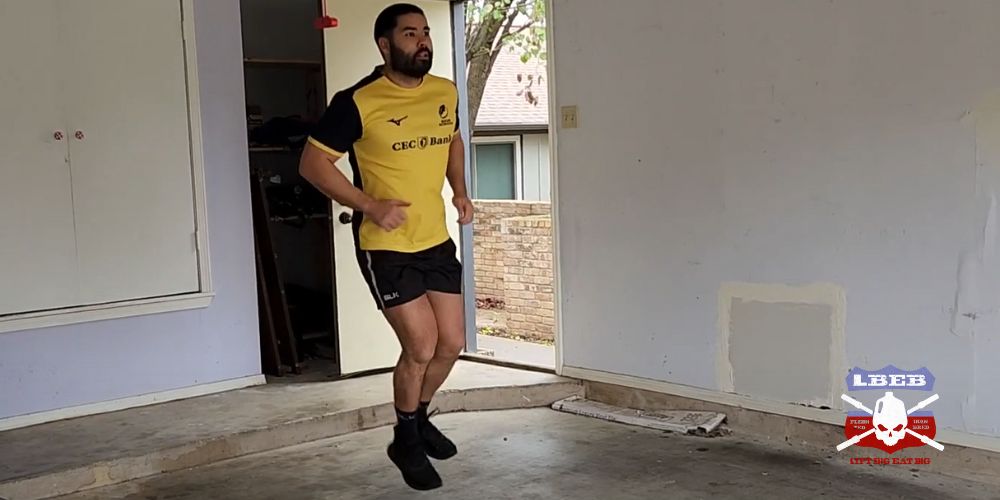Plyometrics are often confused with jumping. However, true plyometrics, as defined by Michael Yessis, the inventor, involves ground contacts faster than 250 ms. To put this in perspective, only sprinting and short ground contact hops and jumps fit this category.
The benefits from plyometrics far exceed mere performance improvements. Changes in tendon and muscle architecture accompany performance enhancements, making plyometrics beneficial for most sporting and physical activities.
Deciphering the research is challenging as studies use subjects with different physical activity backgrounds, exercises, durations, intensities, and volumes. So, I’ll spell these out as I explain each benefit where necessary.
Table of Contents
8 Plyometric Benefits You’ve Never Heard
Much of the research does not explicitly use plyometric exercise but labels it as such. So, these benefits are from a combination of plyometric and jump training.
Increases Muscle Fascicle Length
Increases in fascicle length is the addition of sarcomeres in series. Put crudely, muscle fibers get longer. Why does this matter? There’s two main benefits:
- Increased force production at longer muscle lengths
- Faster contraction velocity
Increasing force production at longer muscle lengths is typically best stimulated through eccentric exercise [1]. But plyometric training is also effective (just less effective) for increasing fascicle length [2].
The benefit of this adaptation is the injury risk reduction [3]. By shifting the optimal length so you’re producing peak force at longer muscle lengths, you’re creating robustness within a muscle. A great example is when sprinting.
People pull their hamstrings sprinting when the muscles can’t handle the extreme forces at long muscle lengths. If you’re optimal length-tension relationship is when the knee is bent at 90 deg, then when the knee extends further during high-force movement, injury happens.
Shifting the angle of peak torque so you can handle this means you’re more resilient to injury. On the second point, faster contraction velocity is important for sports performance, where you must produce as much force as quickly as possible.
Increases Pennation Angle
The increase in pennation angle found in the most recent plyometric meta-analysis is slightly controversial [2]. Pennation angle refers to the angle of the muscle fibers against the line of force. Here’s a simple visual representation below:

An increase in pennation angle is usually only seen as an adaptation to heavy resistance training [4]. It’s an adaptation for muscle size but also improves the muscle’s ability to tolerate eccentric loads. This is important for many plyometric exercises like drop jumps and hurdle hops.
However, a reduction in pennation angle is the adaptation associated with plyometric training as it increases rate of force development. When I dove deeper into the research, it seems the exercise selection and fitness level of the subjects may explain why an increase in pennation angle was found.
For example, greater pennation angle was found when subjects were either untrained or using exercises that wouldn’t be considered plyometric training because of the extended ground contact times and using external loads [5][6][7].
Competitive athletes who performed only sprint and jump training saw a decrease in pennation angle [8]. So changes in pennation angle may depend on these factors.
May Increase Tendon Stiffness

Tendon stiffness enhances athletic performance by allowing a faster transition between the eccentric (muscle lengthening) and the concentric (muscle shortening) phase [9].
It’s measured in the ratio of force applied to the change in displacement of the body. Here’s a simple visual to demonstrate this. Hold a golf ball and a soft rubber ball filled with water over concrete pavement.
Drop them both. Which bounces higher? The golf ball as it is stiffer since the displacement (distance) it bounced was higher. The same concept applies at the muscle-tendon area. Significant increases in tendon but not muscle stiffness were found in the latest meta-analysis [2].
Muscle stiffness increases with muscle thickness and plyometric training did not increase muscle thickness. Therefore, combining plyometric and heavy resistance training gives you the best benefits for performance.
Improves Lower Body Strength
Plyometrics show a practically significant increase of >20 kg in strength compared to control groups [10]. This is regardless of whether fast stretch-shortening cycle (fast ground contact) or slow stretch-shortening cycle movements are used.
All transfer to increasing 1RM squat, leg press, isometric, and isokinetic peak force. Similar findings are seen in individual sporting athletes with a smaller practical significance [11]. You might wonder how jumping quickly on and off the floor translates to pushing more weight or producing more force when lifting.
There are multiple mechanisms behind this. For example, neural adaptations such as increased firing rate, synchronization, excitability, and efferent motor drive of motor units. In layman’s terms, there’s more horsepower hitting the muscle fibers. This optimizes the force generated from each motor unit and muscle fiber.
Increasing horse power further is the length-feedback component in the image below. It represents the muscle spindles and are sensitive to the rate of stretch.
Promoting this mechanism is done through plyometric training increasing the sensitivity to excite the muscles and give more “juice” during force production.

There is also the inhibition of the Golgi Tendon Organ, or GTO for short. The GTO is a force-feedback mechanism that pumps the brakes when it detects force generation is too great for the tendon to handle, reducing the force production of the muscle.
But this mechanism kicks in far too early in lesser-trained individuals. However, heavy strength training inhibits the GTO as a force-feedback mechanism, allowing more force to be produced without dampening.
Improves Jump Performance
Jump performance is where we see the most significant increase in performance after plyometric training. It makes sense since plyometrics are predominantly performed as various jumping, hopping, bounding, and skipping tasks.
But it doesn’t matter the type of jump; they all improve. Even when there is no plyometric component to them. For example, drop jumps see the most significant effect, followed by countermovement jumps (CMJ) and squat jumps (SJ) [2].
Drop jumps are fast SSC, countermovement or vertical jumps are slow SSC, and squat jumps have no elastic component. We also see this in volleyball and individual sporting athletes [11][12].
Individuals who don’t have a strong training history see the most significant benefits in jump performance [2].
Improves Running Economy
Running economy is what sets the best runners from the rest. It represents how little oxygen you need to run at sub-maximal speeds [13]. While less effective than heavy strength training, plyometrics are a tool to improve running economy [14].
When combined with resistance training, it’s an even more potent stimulus and a must for runners to improve their performance [15].
Improves Sprint Performance

Improvements in sprint performance are hit-and-miss within the literature. An earlier meta-analysis found an average reduction of 0.081 seconds from 10 – 100 m sprints, and is the strongest practically significant finding to date [16].
Since then, individual sporting athletes have seen a smaller improvement in sprint performance [11]. Finally, the latest meta-analysis found no reductions in sprint times from plyometric training [2].
When going deeper into the latest meta-analysis, it seems the studies included predominantly or only used vertically orientated plyometrics or didn’t use plyometrics but instead weighted jumping [17][18][19][20].
This is an issue since horizontally orientated plyometrics transfer best to horizontal activities like sprinting [21].
Improves Pre-Tension & Reduces Muscle Slack
The muscle slack theory was brought forward by controversial sports scientists Bas van Hooren and Frans Bosch [22]. It represents the muscle going from relaxed to tense. Their analogy makes it easy to understand how it can apply to performance.
Imagine you’re tying a rope from your back car bumper broken down car’s front bumper so you can tow it. Initially, the rope will be slack and hanging on the ground. This would represent the relaxed muscle state.
For the broken car to begin moving, the slack must be removed from the rope so it is taught. If we bring this analogy back to the body, there must be muscular tension for our body to move. Hence, when jumping off a box and landing on the ground, we must be pre-tensed to rapidly get on and off the floor.
If we are too relaxed, the slack is present; therefore, no movement happens until the slack is taken. Plyometrics hone this ability of pre-tension, which is vital to activities like sprinting.
Plyometric Disadvantages To Be Aware Of
There aren’t many cons to plyometric training. The muscle architecture and performance gains happen whether you’re a beginner or advanced. However, one drawback is if you aren’t prepared for the intensity of plyometric exercise, or you have a previous injury that is easily aggravated.
Repetitive hopping, skipping, jumping, or bounding generates large ground reaction forces through the ankles and knees. If you have knee or ankle issues, plyometrics can make them worse.
You likely won’t run into these issues if you’re healthy, have a solid training history, and take an intelligent approach to plyometrics. To help you with that, I’ve listed beginner and advanced plyometric exercises so you don’t start with advanced variations.
Beginner Plyometric Exercises
This is not an exhaustive list of beginner plyometric exercises, but is enough to get you started. This assumes you’re performing “real” plyometrics with short ground contact times. Hence, there are no box jumps, squat jumps, or any form of slow stretch-shortening cycle jumping.
Tuck Jump
The tuck jump is the more advanced beginner plyometrics. The goal is to spend the least amount of time on the ground while jumping as high as possible. Tuck your knees as you jump.
Ankle Pops
Ankle pops, also known as ankle pogos, can be performed in many ways. In place, forward, backward, sideways, and even rotating. It’s like jumping rope without a rope. This is where you should start your plyometric journey to develop strong tendons to handle more intense plyometric variations.
Jumping Rope
Jumping rope is like the ankle pogo with the added coordination of jumping over a swinging rope. You can use many variations, including the boxer’s skip and single-leg pogos.
Advanced Plyometric Exercises
Drop Jump
The drop jump is the faster version of the depth jump. It’s an ankle-dominant plyometric taking advantage of potential kinetic energy by stepping off a box. The energy from your falling body provides any exercise’s most intense plyometric stimulus.
You must hit the ground and rapidly rebound, jumping in the air with minimal knee bend. To do this, you must have adequate muscular pre-tension.
Depth Jump
The depth jump is the drop jump but with a different strategy. It involves longer ground contact times and more knee bend. It’s also performed from higher boxes and is part of the greatest Soviet Union sports scientist, Verkhoshanksy’s shock method.
Nothing is as intense as stepping off a tall box and rebounding as high as possible. Watch the video yourself and see if you don’t see the average person’s knee explode if they did the same thing.
Hurdle Hop
The hurdle hop is about rhythm. It’s like multiple drop jumps performed continuously and is a hallmark of the ability to switch muscles “on and off” during movement. The fastest movers often don’t generate the most force but can relax the fastest.
You have many hurdle hop variations, with some shown in the video. Double bounces between hurdles and even hurdles of different heights can change the rhythm.
Bounding
Bounding is a staple for many sprinters. It’s a single-leg plyometric exercise where you must propel yourself forward. It is intense on the ankle and Achilles tendon, so you must ease yourself into this exercise and start by performing this on grass.
Summary
Plyometrics have far more benefits than drawbacks regarding physical adaptations and performance. You don’t need to do them if you have no aspirations to compete in a sport and solely train for physique goals. But if you participate in any sport where speed and power are important, plyometrics must be a staple within your program.
References
- Brughelli, M., Mendiguchia, J., Nosaka, K., Idoate, F., Los Arcos, A., & Cronin, J. (2010). Effects of eccentric exercise on optimum length of the knee flexors and extensors during the preseason in professional soccer players. Physical Therapy in Sport, 11(2), 50-55.
- Ramírez-delaCruz, M., Bravo-Sánchez, A., Esteban-García, P., Jiménez, F., & Abián-Vicén, J. (2022). Effects of plyometric training on lower body muscle architecture, tendon structure, stiffness and physical performance: a systematic review and meta-analysis. Sports medicine-open, 8(1), 1-29.
- Brughelli, M., & Cronin, J. (2007). Altering the length-tension relationship with eccentric exercise: implications for performance and injury. Sports Medicine, 37, 807-826.
- Earp, J. E., Kraemer, W. J., Cormie, P., Volek, J. S., Maresh, C. M., Joseph, M., & Newton, R. U. (2011). Influence of muscle–tendon unit structure on rate of force development during the squat, countermovement, and drop jumps. The Journal of Strength & Conditioning Research, 25(2), 340-347.
- Franchi, M. V., Monti, E., Carter, A., Quinlan, J. I., Herrod, P. J., Reeves, N. D., & Narici, M. V. (2019). Bouncing back! counteracting muscle aging with plyometric muscle loading. Frontiers in physiology, 10, 178.
- Ullrich, B., Pelzer, T., & Pfeiffer, M. (2018). Neuromuscular effects to 6 weeks of loaded countermovement jumping with traditional and daily undulating periodization. The Journal of Strength & Conditioning Research, 32(3), 660-674.
- Monti, E., Franchi, M. V., Badiali, F., Quinlan, J. I., Longo, S., & Narici, M. V. (2020). The time-course of changes in muscle mass, architecture and power during 6 weeks of plyometric training. Frontiers in physiology, 11, 946.
- Blazevich, A. J., Gill, N. D., Bronks, R., & Newton, R. U. (2003). Training-specific muscle architecture adaptation after 5-wk training in athletes. Medicine & Science in Sports & Exercise, 35(12), 2013-2022.
- Kalkhoven, J. T., & Watsford, M. L. (2018). The relationship between mechanical stiffness and athletic performance markers in sub-elite footballers. Journal of Sports Sciences, 36(9), 1022-1029.
- De Villarreal, E. S. S., Requena, B., & Newton, R. U. (2010). Does plyometric training improve strength performance? A meta-analysis. Journal of science and medicine in sport, 13(5), 513-522.
- Sole, S., Ramírez-Campillo, R., Andrade, D. C., & Sanchez-Sanchez, J. (2021). Plyometric jump training effects on the physical fitness of individual-sport athletes: A systematic review with meta-analysis. PeerJ, 9, e11004.
- Ramirez-Campillo, R., Andrade, D. C., Nikolaidis, P. T., Moran, J., Clemente, F. M., Chaabene, H., & Comfort, P. (2020). Effects of plyometric jump training on vertical jump height of volleyball players: a systematic review with meta-analysis of randomized-controlled trial. Journal of sports science & medicine, 19(3), 489.
- Balsalobre-Fernández, C., Santos-Concejero, J., & Grivas, G. V. (2016). Effects of strength training on running economy in highly trained runners: a systematic review with meta-analysis of controlled trials. Journal of strength and conditioning research, 30(8), 2361-2368.
- Eihara, Y., Takao, K., Sugiyama, T., Maeo, S., Terada, M., Kanehisa, H., & Isaka, T. (2022). Heavy resistance training versus plyometric training for improving running economy and running time trial performance: a systematic review and meta-analysis. Sports Medicine-Open, 8(1), 138.
- Denadai, B. S., de Aguiar, R. A., de Lima, L. C. R., Greco, C. C., & Caputo, F. (2017). Explosive training and heavy weight training are effective for improving running economy in endurance athletes: a systematic review and meta-analysis. Sports medicine, 47, 545-554.
- de Villarreal, E. S., Requena, B., & Cronin, J. B. (2012). The effects of plyometric training on sprint performance: A meta-analysis. The Journal of Strength & Conditioning Research, 26(2), 575-584.
- Coratella, G., Beato, M., Milanese, C., Longo, S., Limonta, E., Rampichini, S., … & Esposito, F. (2018). Specific adaptations in performance and muscle architecture after weighted jump-squat vs. body mass squat jump training in recreational soccer players. The Journal of Strength & Conditioning Research, 32(4), 921-929.
- Blazevich, A. J., Gill, N. D., Bronks, R., & Newton, R. U. (2003). Training-specific muscle architecture adaptation after 5-wk training in athletes. Medicine & Science in Sports & Exercise, 35(12), 2013-2022.
- Helland, C., Hole, E., Iversen, E., Olsson, M. C., Seynnes, O. R., Solberg, P. A., & Paulsen, G. (2017). Training strategies to improve muscle power: is olympic-style weightlifting relevant?.
- Horwath, O., Paulsen, G., Esping, T., Seynnes, O., & Olsson, M. C. (2019). Isokinetic resistance training combined with eccentric overload improves athletic performance and induces muscle hypertrophy in young ice hockey players. Journal of science and medicine in sport, 22(7), 821-826.
- Moran, J., Ramirez-Campillo, R., Liew, B., Chaabene, H., Behm, D. G., García-Hermoso, A., … & Granacher, U. (2021). Effects of vertically and horizontally orientated plyometric training on physical performance: A meta-analytical comparison. Sports Medicine, 51, 65-79.
- Van Hooren, B., & Bosch, F. (2016). Influence of muscle slack on high-intensity sport performance: A review. Strength and Conditioning Journal, 38(5), 75-87.
